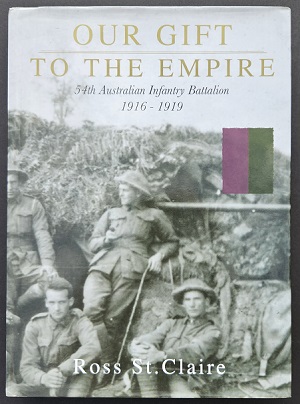Description
Title: Unit History of the 56th Battalion
Author: Tibbetts, Craig and Fletcher, Nick
Condition:
Edition: 1st Edition
Publication Date: 2011/2012
Cover:
Comments: The History of the 56th Battalion AIF – This unit history book is currently being written. If you have any photographs, letters or information that could possibly be used in this forthcoming unit history then we would like to hear from you.
Please email us at info@regimental-books.com.au
In the mean time, subscribe to the out of stock notification to be advised when this book has been published and becomes available.
The 56th Battalion was raised in Egypt on 14 February 1916 as part of the “doubling” of the AIF. Half of its recruits were Gallipoli veterans from the 4th Battalion, and the other half, fresh reinforcements from Australia. Reflecting the composition of the 4th, the 56th was predominantly composed of men from New South Wales. The battalion became part of the 14th Brigade of the 5th Australian Division.
Arriving in France on 30 June 1916, the battalion entered the frontline trenches for the first time on 12 July and fought its first major battle at Fromelles a week later. The battle was a disaster, resulting in heavy casualties across the division. Despite these losses the 5th Division continued to man the front in the Fromelles sector for a further two months.
After a freezing winter manning trenches in the Somme Valley, in early 1917 the 56th Battalion participated in the advance that followed the German retreat to the Hindenburg Line. It was spared the assault but did, however, defend gains made during the second battle of Bullecourt. Later in the year, the AIF’s focus of operations switched to the Ypres sector in Belgium. The 56th’s major battle here was at Polygon Wood on 26 September.
With the collapse of Russia in October 1917, a major German offensive on the Western Front was expected in early 1918. This came in late March and the 5th Division moved to defend the sector around Corbie. The 14th Brigade, took up positions to the north of Villers-Bretonneux and held these even when the village fell, threatening their flanks.
Once the German offensive had been defeated, the Allies launched their own offensive in August 1918. The 14th Brigade did not play a major role in these operations until late in the month, but its actions were critical to the capture of Peronne, which fell on 2 September. The 56th fought its last major battle of the war, St Quentin Canal, between 29 September and 2 October 1918. It was resting out of the line when the Armistice was declared on 11 November. Soon after, members of the battalion began to be returned to Australia for discharge. It ceased to exist as a separate entity on 10 April 1919, when the remnants of all of the 14th Brigade’s battalions were merged into a single unit.




